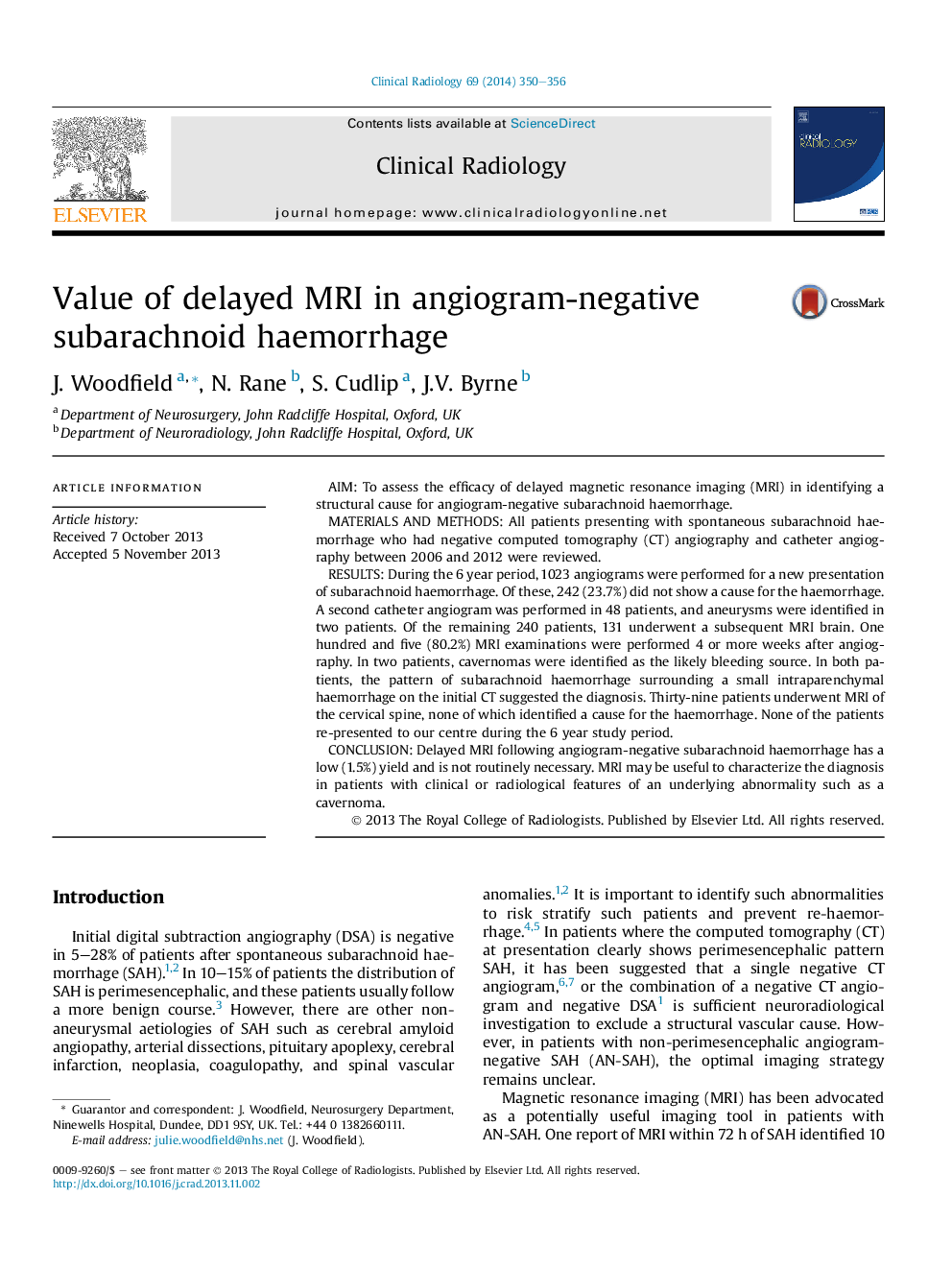| Article ID | Journal | Published Year | Pages | File Type |
|---|---|---|---|---|
| 3981622 | Clinical Radiology | 2014 | 7 Pages |
AimTo assess the efficacy of delayed magnetic resonance imaging (MRI) in identifying a structural cause for angiogram-negative subarachnoid haemorrhage.Materials and methodsAll patients presenting with spontaneous subarachnoid haemorrhage who had negative computed tomography (CT) angiography and catheter angiography between 2006 and 2012 were reviewed.ResultsDuring the 6 year period, 1023 angiograms were performed for a new presentation of subarachnoid haemorrhage. Of these, 242 (23.7%) did not show a cause for the haemorrhage. A second catheter angiogram was performed in 48 patients, and aneurysms were identified in two patients. Of the remaining 240 patients, 131 underwent a subsequent MRI brain. One hundred and five (80.2%) MRI examinations were performed 4 or more weeks after angiography. In two patients, cavernomas were identified as the likely bleeding source. In both patients, the pattern of subarachnoid haemorrhage surrounding a small intraparenchymal haemorrhage on the initial CT suggested the diagnosis. Thirty-nine patients underwent MRI of the cervical spine, none of which identified a cause for the haemorrhage. None of the patients re-presented to our centre during the 6 year study period.ConclusionDelayed MRI following angiogram-negative subarachnoid haemorrhage has a low (1.5%) yield and is not routinely necessary. MRI may be useful to characterize the diagnosis in patients with clinical or radiological features of an underlying abnormality such as a cavernoma.
